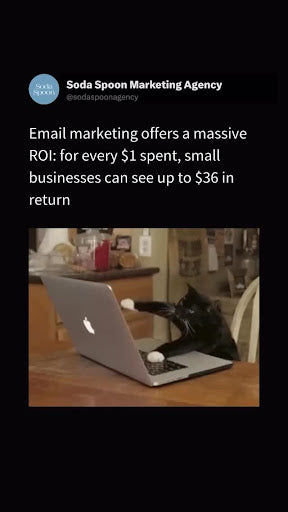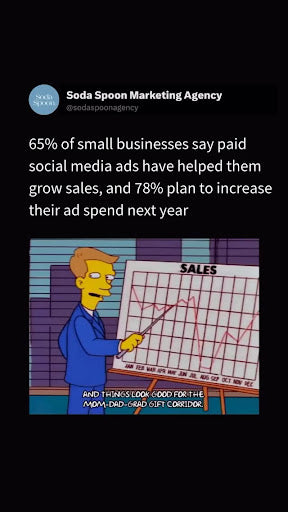In today's rapidly evolving digital landscape, B2B SaaS companies face unprecedented challenges when it comes to standing out in a crowded marketplace. With global SaaS spending projected to exceed $265 billion in 2025 and thousands of new solutions entering the market each year, simply driving traffic to your website is no longer enough. The real measure of marketing success lies in conversions—turning prospects into paying customers.
Recent industry reports show that while the average website conversion rate across industries hovers around 2.35%, top-performing B2B SaaS companies are achieving rates of 5-7% or higher. What's their secret? They've moved beyond outdated marketing playbooks and embraced strategies specifically designed to address the unique challenges of selling complex software solutions to businesses in 2025.
In this comprehensive guide, we'll explore seven proven B2B SaaS marketing strategies that are delivering real results. These aren't theoretical concepts—they're battle-tested approaches being used by successful SaaS companies right now to drive meaningful conversions and sustainable growth.
The Evolution of B2B SaaS Marketing
Before diving into specific strategies, it's important to understand how B2B SaaS marketing has transformed in recent years. The days of relying solely on outbound sales teams, generic content marketing, and broad-based advertising campaigns are fading fast.
Today's B2B buyers are more informed, more selective, and more resistant to traditional sales approaches than ever before. According to recent research:
- 77% of B2B buyers report that their latest purchase was very complex or difficult
- 83% of B2B buyers prefer ordering or paying through digital commerce
- The average buying group for a complex B2B solution involves 6-10 decision-makers
This shift has forced successful SaaS companies to evolve their marketing approaches in several important ways:
- From product-centric to problem-centric: Focusing on the specific business challenges your solution addresses rather than just feature lists
- From mass marketing to precision targeting: Identifying and pursuing ideal customer profiles rather than casting a wide net
- From sales-led to marketing-enabled: Creating digital experiences that allow buyers to self-educate and advance through much of the sales process independently
- From activity metrics to revenue metrics: Measuring success based on pipeline and revenue impact rather than vanity metrics like page views or followers
With this context in mind, let's explore the seven strategies that are helping leading B2B SaaS companies drive meaningful conversions in 2025.
Strategy #1: Account-Based Marketing (ABM) 2.0
Account-Based Marketing has been around for years, but in 2025, it's undergone a significant evolution. Today's ABM approaches leverage advanced AI, intent data, and personalization capabilities to create highly targeted campaigns that resonate with specific accounts.
The New ABM Playbook
Modern ABM goes far beyond simply creating a target account list and running ads. It involves:
-
AI-Powered Account Selection: Using machine learning algorithms to identify accounts with the highest propensity to buy based on firmographic data, technographic data, and behavioral signals.
-
Buying Team Mapping: Identifying all key stakeholders within target accounts and understanding their specific roles, challenges, and objectives.
-
Personalized Multi-Channel Engagement: Creating customized content experiences across web, email, social, and other channels that speak directly to the unique challenges of each account.
-
Sales and Marketing Alignment: Ensuring tight coordination between marketing initiatives and sales follow-up through integrated workflows and communication channels.
Case Study: Precision ABM in Action
Cloud security provider ShieldTech (name changed) implemented an advanced ABM program targeting 150 enterprise accounts in the financial services sector. Their approach included:
- Creating industry-specific security assessment tools for each target account
- Developing personalized microsites addressing the specific compliance challenges faced by each prospect
- Coordinating outreach across LinkedIn, email, direct mail, and executive events
The results were impressive: a 43% meeting conversion rate with target accounts (compared to their previous 12% baseline) and a 28% increase in average contract value. The key to their success was hyper-relevance—creating experiences that felt custom-designed for each prospect's specific situation.
ABM Metrics That Matter
When implementing ABM, focus on these key performance indicators:
- Account engagement score (measuring depth of interaction across the buying committee)
- Meeting conversion rate for target accounts
- Pipeline velocity for ABM accounts vs. non-ABM accounts
- Average contract value for ABM-sourced deals
- Customer acquisition cost (CAC) for ABM vs. other channels
Strategy #2: Interactive Product Demonstrations
In the B2B SaaS world, seeing is believing. But traditional product demos often fail to convert because they're too generic, too complex, or too disconnected from the prospect's specific needs. In 2025, leading companies are replacing static demos with interactive, personalized product experiences that drive significantly higher conversion rates.
Beyond the Generic Demo
The most effective product demonstrations share several key characteristics:
-
Use-Case Specificity: Tailoring the demonstration to the exact business problems the prospect is trying to solve
-
Interactivity: Allowing prospects to manipulate the product themselves rather than passively watching a presentation
-
Progressive Disclosure: Starting with simple, high-value features and gradually introducing more complex capabilities as the prospect shows interest
-
Contextual Guidance: Providing just-in-time explanation and support as prospects explore the product
Implementing Effective Interactive Demos
There are several approaches to creating interactive demos that convert:
- Guided Product Tours: Custom pathways through your product that highlight features relevant to specific use cases or roles
- Sandbox Environments: Limited versions of your product that allow prospects to experiment with their own data in a controlled setting
- Interactive Video Demos: Click-through videos that allow prospects to choose their own path based on their interests
- Virtual POCs: Streamlined proof-of-concept environments that focus on validating specific value propositions quickly
Many SaaS companies are now using specialized tools like Walnut, Reprise, or Navattic to create these experiences without burdening their product and engineering teams.
Conversion Optimization for Product Demos
To maximize the impact of your interactive demos:
- Implement progressive profiling to gather key information throughout the demo experience
- Use behavioral triggers to identify high-intent signals (like exploring pricing pages or integration options)
- Deploy targeted follow-up based on specific features or use cases explored
- A/B test different demo paths to identify the highest-converting experiences
One enterprise CRM provider improved demo-to-meeting conversion rates by 62% by implementing personalized interactive demos that focused on industry-specific workflows rather than generic product tours.
Strategy #3: Community-Driven Content Marketing
Content marketing remains essential for B2B SaaS companies, but the approach that works in 2025 looks very different from traditional blogging and white paper strategies. Today's highest-converting content programs are built around communities of users, prospects, and industry experts who collaborate to create authentic, valuable resources.
The Community Content Model
Community-driven content works because it combines expertise, authenticity, and social proof. Key elements include:
- User-Generated Success Stories: Real customers sharing specific outcomes and implementation approaches
- Peer-to-Peer Forums: Spaces where prospects can ask questions and get answers from existing customers
- Expert Contributor Networks: Industry specialists who provide perspective beyond your company's internal viewpoint
- Co-Created Resources: Collaborative content developed with customers, partners, and thought leaders
High-Converting Content Formats
While the specific formats will vary based on your audience, several content types are consistently delivering strong conversion results for B2B SaaS companies:
- Implementation Playbooks: Step-by-step guides showing exactly how to achieve specific outcomes with your solution
- ROI Calculators: Interactive tools that help prospects quantify the potential value of your solution
- Decision-Maker Guides: Resources specifically designed to help executive sponsors justify the purchase internally
- Industry Benchmarks: Data-driven content that helps prospects understand how they compare to peers
Case Study: Community Content in Action
Project management platform TaskForge (name changed) built a community content hub where customers could share templates, workflows, and implementation advice. They then created a content upgrade strategy where anonymous visitors could access basic content, while registration was required for premium resources.
The results included:
- 3x higher conversion rates compared to their traditional gated content
- 72% increase in qualified leads from content marketing
- Reduced sales cycle length as prospects entered the pipeline better educated
The key insight: prospects trust the voices of their peers far more than traditional marketing materials. By facilitating these peer connections through content, TaskForge dramatically improved both conversion rates and sales velocity.
Strategy #4: Data-Driven Customer Journey Optimization
The B2B SaaS customer journey is complex, often involving multiple decision-makers, touchpoints, and stages. Leading companies are using advanced analytics and journey mapping to identify and optimize critical conversion points throughout this journey.
Mapping the Modern B2B Journey
The first step is creating a detailed map of your customer journey that accounts for:
- Multiple buyer personas and their different information needs
- Various entry points to your marketing ecosystem
- Key decision points and potential objections
- Hand-off points between marketing, sales, and customer success
With this map in place, you can identify the critical conversion points that deserve the most attention.
Critical Conversion Points to Optimize
While every company's journey is unique, these conversion points typically have the biggest impact for B2B SaaS companies:
- Anonymous Visitor to Known Lead: The initial identification and qualification of prospects
- MQL to SQL: The transition from marketing-qualified to sales-qualified leads
- Discovery Call to Demo: Converting initial interest to deeper product exploration
- Demo to Proposal: Moving from product validation to commercial discussions
- Proposal to Closed Deal: Overcoming final objections and securing agreement
Journey Optimization Techniques
For each critical conversion point, implement a structured optimization process:
- Baseline Measurement: Establish current conversion rates and identify drop-off points
- Hypothesis Development: Create testable theories about what might improve conversion
- A/B Testing: Implement controlled experiments to validate your hypotheses
- Iteration: Continuously refine based on results
For example, one B2B analytics company discovered that their MQL to SQL conversion rate was significantly lower for enterprise prospects compared to mid-market. By implementing specialized enterprise-focused content and a dedicated enterprise qualification process, they improved this conversion rate by 34%.
Advanced Journey Analytics
To take your journey optimization to the next level:
- Implement multi-touch attribution to understand which touchpoints drive the most value
- Use predictive lead scoring to identify high-potential prospects earlier
- Deploy intent monitoring to detect buying signals across channels
- Create dynamic journey orchestration that adapts based on prospect behavior
Strategy #5: Vertical-Specific Value Propositions
Generic messaging rarely converts in today's specialized B2B environment. Companies achieving the highest conversion rates are developing tailored value propositions for specific vertical markets, addressing the unique challenges, regulatory environments, and success metrics of each industry.
Moving Beyond One-Size-Fits-All
The vertical specialization approach includes:
- Industry-Specific Messaging: Adapting your core value proposition to resonate with particular industries
- Specialized Use Cases: Highlighting how your solution addresses challenges unique to each vertical
- Industry-Specific Social Proof: Featuring testimonials and case studies from companies in the target vertical
- Relevant Integrations: Emphasizing connections with industry-specific tools and platforms
Implementing Vertical Specialization
To effectively implement vertical-specific marketing:
- Select Target Verticals: Identify 2-3 industries where your solution has demonstrated strong fit and results
- Conduct Deep Research: Understand the specific language, challenges, and buying processes in each vertical
- Create Dedicated Resources: Develop landing pages, case studies, and sales enablement materials for each vertical
- Train Specialists: Ensure your sales team has industry-specific knowledge to speak credibly to these prospects
Case Study: Vertical Specialization Results
Customer feedback platform FeedbackLoop (name changed) created specialized versions of their core platform for healthcare, financial services, and retail. For each vertical, they:
- Developed industry-specific templates and benchmarks
- Created compliance documentation relevant to industry regulations
- Built integrations with industry-standard systems
- Established advisory boards with industry experts
The results included a 41% increase in conversion rates for these targeted verticals and a 23% higher average contract value compared to their generic offering.
The lesson: when prospects feel your solution was built specifically for their industry, both conversion rates and deal sizes increase substantially.
Strategy #6: Conversational Marketing and AI Sales Assistants
The traditional form-based lead capture approach is being rapidly replaced by conversational experiences powered by increasingly sophisticated AI. These tools create more natural, responsive buying experiences while qualifying prospects and advancing them through the sales process more efficiently.
The Conversational Marketing Evolution
Today's conversational marketing tools go far beyond simple chatbots:
- AI Sales Assistants: Advanced conversational agents that can answer product questions, qualify prospects, and schedule meetings
- Personalized Conversation Flows: Dialogue paths customized based on the visitor's source, behavior, and firmographic data
- Seamless Human Handoffs: Intelligent routing to the appropriate sales team member when the conversation requires human expertise
- Omnichannel Conversations: Maintaining context as conversations move across web, email, SMS, and other channels
Implementation Best Practices
To make conversational marketing work effectively:
- Map conversation flows to your key buyer personas and their typical questions
- Integrate with your CRM to leverage existing prospect data and capture new insights
- Create specialized flows for high-value pages like pricing and product features
- Develop clear escalation paths for complex questions or high-value prospects
Measuring Conversational Success
Track these metrics to evaluate your conversational marketing:
- Conversation initiation rate (what percentage of visitors engage)
- Qualification rate (how efficiently the AI identifies qualified prospects)
- Meeting booking rate (conversion to scheduled sales conversations)
- Customer satisfaction with the conversational experience
One enterprise software company implemented an advanced conversational marketing program that generated 37% more qualified sales opportunities while reducing their sales development team's workload by 23%. The key was creating highly specific conversation paths for different industries and use cases rather than generic chat experiences.
Strategy #7: Customer Success-Led Growth
In the subscription economy, the sale is just the beginning of the revenue relationship. Leading B2B SaaS companies are turning customer success into a powerful marketing function that drives expansions, upsells, and referrals.
Beyond Traditional Customer Marketing
Customer success-led growth includes:
- Value Realization Programs: Structured processes to ensure customers achieve and recognize ROI
- Expansion Playbooks: Systematic approaches to identify and act on growth opportunities within existing accounts
- Advocate Cultivation: Identifying and nurturing customers who can become references, case studies, and referral sources
- Customer Communities: Creating spaces for customers to connect, share best practices, and deepen their product usage
Building an Effective Referral Engine
Referrals consistently produce the highest-quality leads for B2B SaaS companies. To generate them systematically:
- Identify Referral Triggers: Recognize the moments when customers are most likely to make referrals (after successful implementation, achieving ROI milestones, etc.)
- Create Referral Enablement: Make it easy for customers to make introductions with templates, incentives, and clear processes
- Implement Account Mapping: Use tools to identify connections between your customers and prospective accounts
- Develop Target Account Referral Programs: Create specialized approaches for securing introductions to high-value prospects
Case Study: Success-Led Growth
Data security platform SecureVault (name changed) implemented a structured customer success program that:
- Created quarterly business reviews focused on value realization
- Implemented success milestones with celebration and referral requests
- Developed a customer advisory board with executive engagement
- Built an active online community with recognition for contributors
The results were impressive: 38% of their new business came from customer referrals (compared to an industry average of 9%), and their net revenue retention reached 118%, creating significant growth from the existing customer base.
Implementation Roadmap
With seven powerful strategies to choose from, where should you start? The answer depends on your specific situation, but this assessment framework can help you prioritize:
- Audit Current Performance: Identify where your biggest conversion gaps exist in the customer journey
- Assess Resource Requirements: Evaluate the investment needed for each strategy against your available resources
- Consider Time to Impact: Balance quick wins with longer-term strategic initiatives
- Evaluate Organizational Readiness: Determine which strategies align best with your team's current capabilities
For most B2B SaaS companies, a 90-day implementation plan might look like:
Days 1-30: Quick Wins
- Implement basic conversational marketing on high-value pages
- Create vertical-specific landing pages for your top 2 industries
- Develop an interactive demo for your most common use case
Days 31-60: Process Development
- Implement journey analytics to identify major conversion opportunities
- Develop a structured referral program for your customer success team
- Create a basic ABM pilot for 20-30 target accounts
Days 61-90: Scaling Success
- Expand successful programs based on initial results
- Implement more sophisticated measurement and attribution
- Develop training and enablement to ensure consistent execution
Measuring Success
To evaluate the impact of these strategies, implement a balanced scorecard of metrics that includes:
Leading Indicators:
- Engagement rates by channel and content type
- Conversion rates at each stage of the journey
- Meeting show rates and quality scores
- Sales cycle velocity
Business Outcomes:
- Pipeline generated by source and strategy
- Customer acquisition cost by channel
- Average contract value trends
- Net revenue retention
The most successful B2B SaaS marketers continuously connect these metrics, using leading indicators to predict and influence business outcomes.
Looking Ahead: The Future of B2B SaaS Marketing
As you implement these seven strategies, keep an eye on these emerging trends that will shape the next wave of B2B SaaS marketing innovation:
- Hyper-Personalization at Scale: Using AI to create truly individualized experiences for thousands of prospects simultaneously
- Immersive Product Experiences: Leveraging AR/VR to create more compelling product demonstrations
- Predictive Journey Orchestration: Using machine learning to anticipate needs and deliver the perfect content at the perfect moment
- Ecosystem Marketing: Building collaborative programs with complementary solutions in your technology ecosystem
Conclusion
The B2B SaaS marketing landscape continues to evolve rapidly, but the fundamentals remain constant: understand your customers deeply, create experiences that directly address their needs, and continuously optimize based on data.
By implementing the seven strategies outlined in this guide, you'll be well-positioned to drive meaningful conversions and sustainable growth in 2025 and beyond. The companies that succeed won't be those with the biggest budgets or the flashiest campaigns, but those who most effectively connect their solutions to the specific challenges and opportunities facing their target customers.
Start by selecting the strategies that address your most critical conversion gaps, implement them with focus and discipline, and continuously refine based on results. The payoff will be more efficient growth, higher-quality customer relationships, and a sustainable competitive advantage in an increasingly crowded marketplace.
Ready to transform your B2B SaaS marketing strategy? Contact our team for a customized assessment of your current approach and recommendations.




